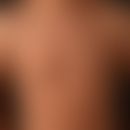Synonym(s)
DefinitionThis section has been translated automatically.
Antimycotic (triazole) from the group of azole antimycotics.
Pharmacodynamics (Effect)This section has been translated automatically.
Inhibition of the fungal cytochrome P450-dependent ergosterol (essential membrane lipid) synthesis.
You might also be interested in
IndicationThis section has been translated automatically.
Disseminated aspergillosis, fluconazole-resistant Candida sepsis or severe invasive Candida infections (including C. krusei), severe infections caused by Scedosporium spp. or Fusarium spp.
Notice! Reserve antifungal, primarily for immunosuppressed patients with progressive or life-threatening infections.
Pregnancy/nursing periodThis section has been translated automatically.
Dosage and method of useThis section has been translated automatically.
- Peroral application:
- Adults and children > 12 years Initially on 1st day of treatment 400 mg p.o. In patients with < 40 kg bw 200 mg p.o. every 12 hours Maintenance dose from 2nd day of treatment: 2 times/day 200 mg p.o. (patient > 40 kg KG) or 2 times/day 100 mg p.o. (Pat. < 40 kg KG).
- Children 2-12 years. Initial 2 times/day 6 mg/kg bw p.o. Maintenance dose from day 2: 2 times/day 4 mg/kg bw p.o.
- Intravenous:
- Adults and children > 12 years: 2 times/day (every 12 hours) 6 mg/kg bw. Maintenance dose from day 2: 2 times/day 4 mg/kg bw i.v.
- children 2-12 years Initial 2 times/day 6 mg/kg bw i.v. (every 12 hours), maintenance dose from day 2: 2 times/day 4 mg/kg bw i.v.
Notice! Do not inject infusion solution as a bolus! Infusion rate: max. 3 mg/kg KG per hour for 1-2 hours
Undesirable effectsThis section has been translated automatically.
Very common: increased transaminase levels, exanthema, visual disturbances, fever, headache, gastrointestinal symptoms (abdominal pain, nausea, vomiting, diarrhea), visual disturbances in the first 1-2 hours after application.
Frequent: chills, flu symptoms.
Rare: Phototoxic reactions (phototoxicity - see pseudoporphyria below). Other dermatological side effects of voriconazole include urticaria, Stevens-Johnson syndrome, toxic epidermal necrolysis, discoid lupus erythematosus, cheilitis and an increased incidence of squamous cell carcinoma (SCC) in immunocompromised patients (Caroppo F et al. 2023). In the case of pseudoporphyria caused by voriconazole, it is assumed that voriconazole acts similarly to endogenous photoactivated porphyrins or through protease-mediated damage to the vascular endothelium after sun exposure. A case series by Goyal et al. reported on a group of 40 children who received voriconazole after allo-BMT. Nine (22.5%) patients developed various skin lesions (sunburn-like erythema, pseudoporphyria, linear papulovesicular lesions, severe erosive cheilitis, dermatoheliosis, lentigines) in sun-exposed areas after initiation of therapy (1.8-12.5 months). Voriconazole was continued in 4 patients, while it was replaced by fluconazole or posaconazole in the remaining patients.
Rare: Development of malignancies of the skin (spinocellular carcinoma, malignant melanoma), which occur mainly in organ transplant patients.
InteractionsThis section has been translated automatically.
Increase in the effect level (dose reduction of the comedication may be necessary in case of side effects!) of ciclosporin, tacrolimus, omeprazole. Interactions also in therapy with anticoagulants (control of PTT!), sulfonylureas, benzodiazepines (midazolam), prednisolone, rifabutin, HIV protease inhibitors, non-nucleoside (efavirenz, nevirapine) reverse transcriptase inhibitors.
ContraindicationThis section has been translated automatically.
PreparationsThis section has been translated automatically.
Vfend®
Note(s)This section has been translated automatically.
Cave! Effective contraception in women of childbearing age is required (teratogenic potential in animal experiments)!
Notice! Ability to drive and operate machines may be impaired during treatment.
LiteratureThis section has been translated automatically.
- Caroppo F et al. (2023) Pseudoporphyria Induced by Voriconazole in a 10-year-old Boy: A Case Report and Review of the Literature. Acta Derm Venereol 103:adv10286.
- Goyal RK et al. (2014) Phototoxic dermatoses in pediatric BMT patients receiving voriconazole. Pediatr Blood Cancer 61: 1325-1328
- Vöhringer S et al. (2011) Massive phototoxicity during long-term therapy with voriconazole. JDDG 9: 274-276.
- Williams K et al. (2013) Voriconazole-associated cutaneous malignancy: a literature review on photocarcinogenesis in organ transplant recipients. Clin Infect Dis 58:997-1002






